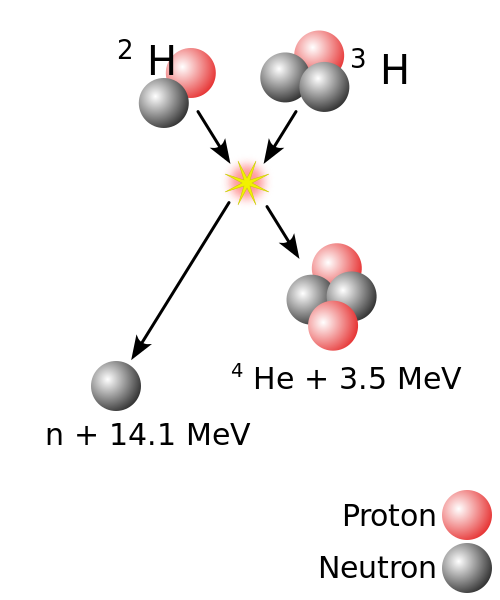File talk:D-T fusion.svg
He-5 intermediate mass[edit]
Isotopes of helium lists decay energy of He-5 as 0.60 MeV, and calculation from the listed masses of He-5, He-4, and neutron gives 0.886624751 MeV. Either is far less than the 17.6 MeV released in D-T fusion. Perhaps some excited state of He-5 is the intermediate, but I haven't seen this statement; are there any references for it? Also, Nuclear fusion uses a similar illustration with no intermediate. --JWB (talk) 14:21, 29 January 2009 (UTC)
how do you calculate .88662 Mev? —Preceding unsigned comment added by 129.65.224.69 (talk) 01:05, 4 May 2009 (UTC)
if you are looking at the charts, what tyou are seeing is radioactive decay of He5, not fusion. To calculate fusion energy you need to calculate the difference in binding energy I.E. mass defect.And then ifI remember correctly you must use the proper calculations devide that energy between the neutron and the He4 atom, much like when calculating alpha energies —Preceding unsigned comment added by 128.193.15.53 (talk) 09:56, 30 March 2011 (UTC)

